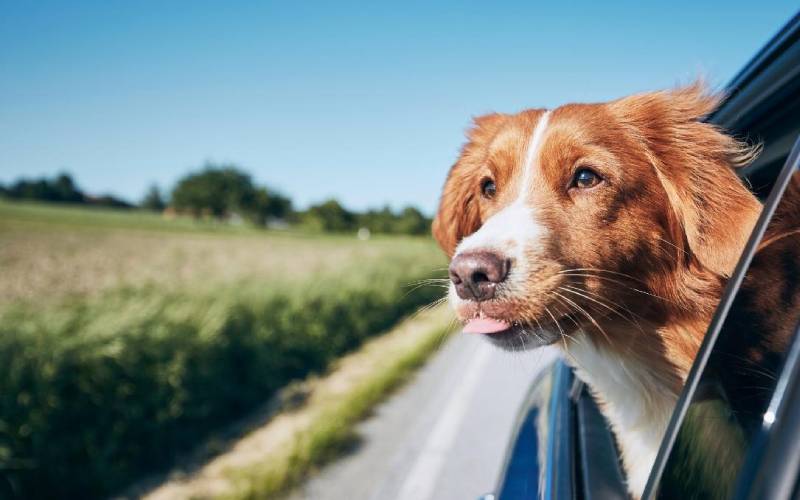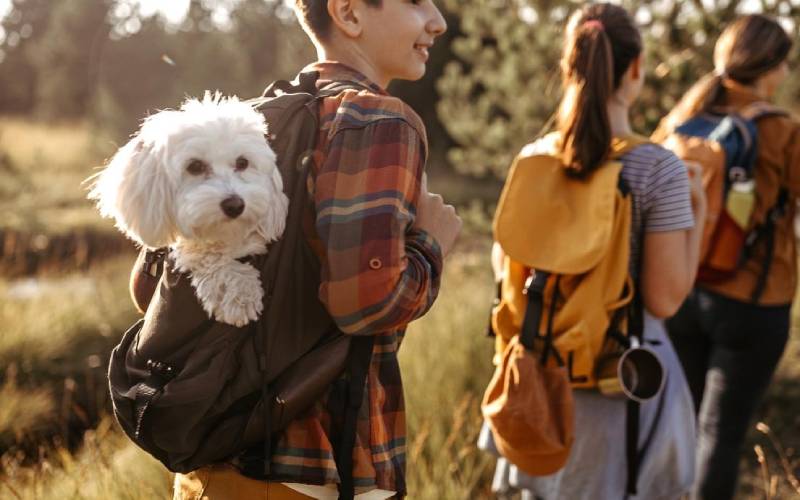Have you ever noticed your puppy feeling uneasy during car rides? It’s a common issue many pet owners face, but don’t worry, you’re not alone in this. What if there were effective ways to help your furry friend enjoy car journeys without discomfort? Can you really turn those stressful trips into pleasant experiences for your puppy?
Yes, you can help your puppy overcome carsickness. It’s often due to a mix of psychological stress and physical inner ear development. Effective remedies include medication, pre-travel routines, and travel adjustments like proper positioning and anxiety vests. Gradual familiarization with car rides and staying calm also help, ensure a comfortable journey for your puppy.
Dive deeper into this comprehensive guide to discover a variety of tips and techniques and learn how to make car travel a joy rather than a dread for your puppy, ensuring a happy journey for both of you.
Causes of Motion Sickness in Dogs
Car sickness in dogs can manifest during various modes of transportation. For example, car rides, boats, flying, and train travel. The root causes of motion sickness can be attributed to either physical or psychological factors and some other contributing factors.
Psychological Triggers
A significant factor in dog motion sickness is psychological. Primarily stress and anxiety related to travel. Dogs can develop a negative association with car travel, often due to past unpleasant experiences. That psychological stress can then manifest physically, leading to symptoms like nausea and vomiting during journeys.
Physical Causes
The physical aspect of motion sickness in dogs often involves the inner ear – vital for maintaining balance. When traveling, the visual stimulation of moving scenery, coupled with the vehicle’s physical stillness, can confuse a dog’s brain. This conflict between what they see and what their body feels can disrupt their sense of balance—triggering the brain’s nausea center and leading to motion sickness.
Additionally, puppies are more prone to this condition as their inner ears are still developing. Though dogs of any age can be affected.
Symptoms of Dog Motion Sickness
Knowing when your dog is experiencing motion sickness is key to creating a stress-free travel experience. Dogs don’t show the same color changes as humans when they are feeling sick. But, there are clear signs that can alert you when your pup feels discomfort.
It’s important to be aware of these indicators, as dogs can’t verbally communicate their nausea-type feelings. For example, Some dogs are great travelers, but others, even on short trips to the vet or groomer, can feel anxious and unwell.
So, you should have to be vigilant about symptoms such as:
- Diarrhea
- Excessive drooling
- Lethargy
- Hunched back or other stiff body posture
- Lip-licking or yawning
- Pacing
- Lips pulled back
- Panting
- Whining
- Swallowing frequently
- Vomiting (in some, but not all, cases)
- Wide eyes
Tips for Preventing Dog Motion Sickness
Dealing with a puppy’s motion sickness can be challenging, but there are several effective strategies you can try to help calm your dog:
- Travel on an Empty Stomach: Start the journey with your puppy having an empty stomach. However, if that doesn’t seem to help, trying to offer a small amount of food or a few treats might actually reduce the likelihood of nausea. Remember, it’s also important for your puppy to stay hydrated. So, make sure he gets enough water.
- Pre-Travel Walks: A relaxing walk before getting into the car can significantly help your puppy settle down for the journey. Exercise and fresh air can ease anxiety. Making the car ride smoother.
- Use of Anxiety Vests: Consider using anxiety vests or jackets designed for dogs. These garments provide gentle compression, mimicking a swaddle, that can be soothing and help keep your puppy calm during travel.
- Proper Orientation in the Car: Position your puppy so he’s facing forward during the trip as puppies understand forward motion better than moving backward due to their developing ocular center in the brain.
- Fresh Air Through Rolled-Down Windows: Slightly opening the car windows can equalize the pressure inside the vehicle and provide fresh air – often helping dogs feel more comfortable.
- Use of Travel Booster Seats: For smaller puppies who even can’t see out of the windows, a travel booster seat might be a good idea. It helps keep them stable. And allows them to look outside, which can be reassuring.
- Limiting the Outside View: If looking outside seems to make your puppy carsick, try blocking his view with a covered crate or sun shades on the windows. You can also create a cozy ‘dog fort’ in the backseat. By stretching a fitted sheet over the front and rear headrests.
- Frequent Breaks: Make regular stops not only for your puppy to sniff around and stretch but also to give his brain a rest from the sensory input. That might be contributing to the motion sickness.
- Gradual Introduction to Car Rides: Start with short, frequent car trips to places your puppy enjoys. Gradually increase the duration of the rides. It will help him build a positive association with car travel.
- Stay Calm If He Gets Sick: If your puppy does end up getting carsick, try to stay calm. Your anxiety can add to your puppy’s stress. And that makes the situation more worse.
By following these tips, you can help ease your puppy’s motion sickness and make car rides a more pleasant experience for both of you.
Is There Any Medicine for Motion Sickness in Dogs?
If your dog still feels fear of car rides, after using all the tips we mentioned above. Don’t worry! it might be the right time to think about medications. But, hold on! Before you reach for anything, it’s very important to get a piece of advice from your vet experts who can guide you on the right dosage for your furry friend as:
| Remedy | Type | Use | Note |
| Ginger | Natural | Anti-nausea | Consult vet; avoid with certain meds |
| Adaptil | Natural | Calming pheromone | Collar for daily use; spray pre-travel |
| Calming Supplements (e.g., Solliquin, Composure, Rescue Remedy) | Natural | Reduce anxiety | May need daily dosing; few side effects |
| Lavender | Natural | Aromatherapy | Use as a spray or on the cotton ball; keep away from dogs |
| CBD Supplements | Natural | Calming | Consult a vet for quality products |
| Cerenia (maropitant) | Pharmaceutical | Anti-vomiting | FDA-approved; for dogs 8 weeks and older |
| Meclizine | Pharmaceutical | Antihistamine | OTC or prescription; drowsiness common |
| Benadryl (diphenhydramine) & Dramamine (dimenhydrinate) | Pharmaceutical | Motion sickness | Every 8 hours; may cause sedation |
| Anti-Anxiety Medication | Pharmaceutical | Anxiety-related motion sickness | Prescription required; combined with behavior modification |
Wrapping It Up
In the end, when it comes to dealing with your puppy’s carsickness, patience and following a rational strategy play vital roles in this behavior. It’s all about taking small, steady steps to help your little dog get used to car rides. And think when you’re ever in doubt, especially about using medicines, it’s the best way to consult your vet. They know the pros and can give you the best prices of advice for your puppy. With the right approach, a bit of understanding, and lots of love, you can help your puppy car rides without feeling sick but possibly even enjoy them in the future!
972-372-9225
[email protected]
olk9dfw.com



